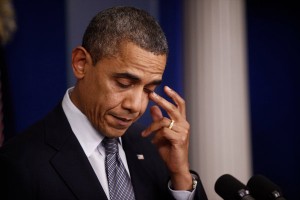 United States President Barack Obama‘s executive cyber security order, announced during his State of the Union address, may have garnered some praise from several quarters, but it has also revived calls for more comprehensive bipartisan legislation to address long-term security threats.
United States President Barack Obama‘s executive cyber security order, announced during his State of the Union address, may have garnered some praise from several quarters, but it has also revived calls for more comprehensive bipartisan legislation to address long-term security threats.
As expected, Obama signed a Presidential Policy Directive requiring federal agencies and critical infrastructure owners and operators to work cooperatively to minimise cyber risks and strengthen resilience to attacks.
The order stems from what the White House has long said is the need for immediate action to protect critical assets against cyber threats because of Congress’ continued failure to pass legislation.
Republicans, however, have assailed the plan to issue the order as unnecessary presidential overreach and have long maintained that the best way to address security issues is through bipartisan legislation.
BITS, the technology policy division of the influential Financial Services Roundtable, on Tuesday night called the directive a constructive step forward but added that legislation is still necessary.
“While the Executive Order moves our nation forward, Congressional action is needed to effect additional fundamental improvement,” the group said in a statement. “We urge Congress to build upon these actions, while not duplicating them.”
Alan Paller, Research Director, SANS Institute in Bethesda, called the executive order weaker than expected.
Draft versions of the executive order had contained language that required industry to develop voluntary best practices for cyber security and then assigning regulatory agencies to enforce them. That language was excluded from the final version of the order, Paller said.
“The shocker was that, in the very last version, at the insistence of industry lobbyists, the White House took out all elements that would have made attacks against the United States less effective and harder to launch,” Paller said.
Obama’s order requires that federal government agencies share cyberthreat and vulnerability information with each other and with private companies. It calls for the enablement of a national situational awareness capability for cyber security through better information sharing.
The executive order establishes two national critical infrastructure centres to be operated by the U.S. Department of Homeland Security (DHS). One will focus on physical infrastructure and the other on cyber infrastructure.
The centres will serve as a central point for collecting and disseminating threat information gathered by various sector specific government agencies and departments and by owners of critical infrastructure.
The centres will also be responsible for integrating, analyzing and prioritizing vulnerability and threat information from various sources including the Department of Defence, the Department of Justice and the intelligence community.
As part of this function, the DHS centres will recommend prevention and mitigation measures for critical infrastructure prior to and during a cyberattack, and will help with incident response and restoration efforts.
The executive order puts DHS in charge of planning, coordinating and implementing changes. It requires the DHS and sector-specific federal agencies to work with critical infrastructure owners and regulatory entities to develop security guidelines and metrics for measuring progress.
It gives the DHS six months to identify baseline data formats and systems that federal agencies and critical infrastructure operators will need to use to receive and share threat information with each other in a secure and privacy-friendly manner.
Under the executive order, the DHS has 240 days to demonstrate a near real-time situational awareness capability that can assimilate threat information from multiple sources, analyze it and disseminate it.
“We know hackers steal people’s identities and infiltrate private emails,” Obama said in his address. “Now our enemies are also seeking the ability to attack our power grid, our air traffic control system. We cannot look back years from now and ask why we did nothing to face real threats to our security and our economy.”
The contents of Obama’s executive order are similar in some respects to the provisions of the 2012 White House-backed Cyber Security Act. That bill stalled in the Senate last year over objections from Republicans who saw it as being too prescriptive and giving the DHS too much enforcement authority.
It also contains at least some of the same information-sharing provisions in the controversial Cyber Intelligence Sharing and Protection Act (CISPA) of 2012. The CISPA bill, recently reintroduced in Congress, seeks to promote cyber security by enabling better information sharing between the government and the commercial sector.
Some industry groups oppose the bill on privacy grounds.
Obama’s executive order enables better information sharing but lacks the legal and liability protections that CISPA offers for companies that share information with each other and the government.
The effectiveness of the executive order depends on the quality of the threat information that the government is able to share with private companies, said Lawrence Pingree, an analyst at Gartner.
“It remains to be seen whether the government has useful intelligence that can help bolster commercial sector security or is the benefit the other way around,” Pingree said.
Several Democratic lawmakers were quick to welcome the executive order but insisted that legislation is required to fully address long-term security needs.
“The voluntary framework and information sharing improvements developed under this issuance are vital components of ensuring the security and resiliency of our critical infrastructure,” said Senator Tom Carper (D-Del), chairman of the Homeland Security and Governmental Affairs committee
But “more action is needed to address cyber security and I still believe that bipartisan legislation offers the best long-term solution to this serious security threat,” he said in a statement.





